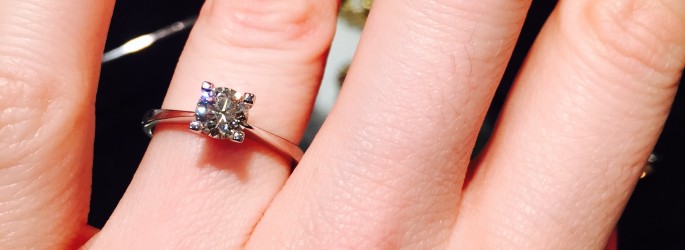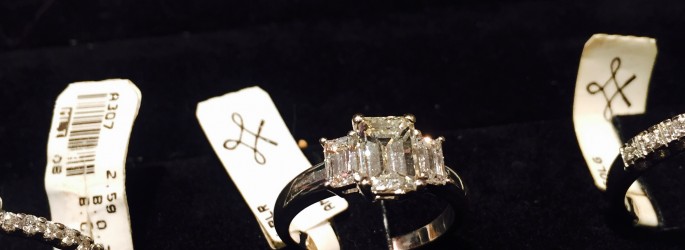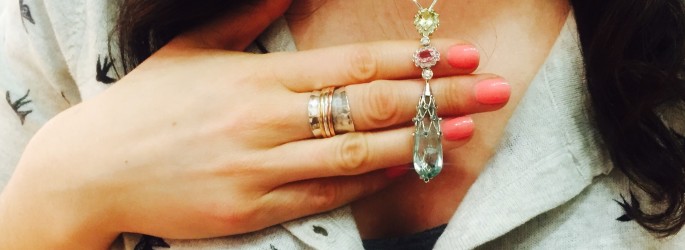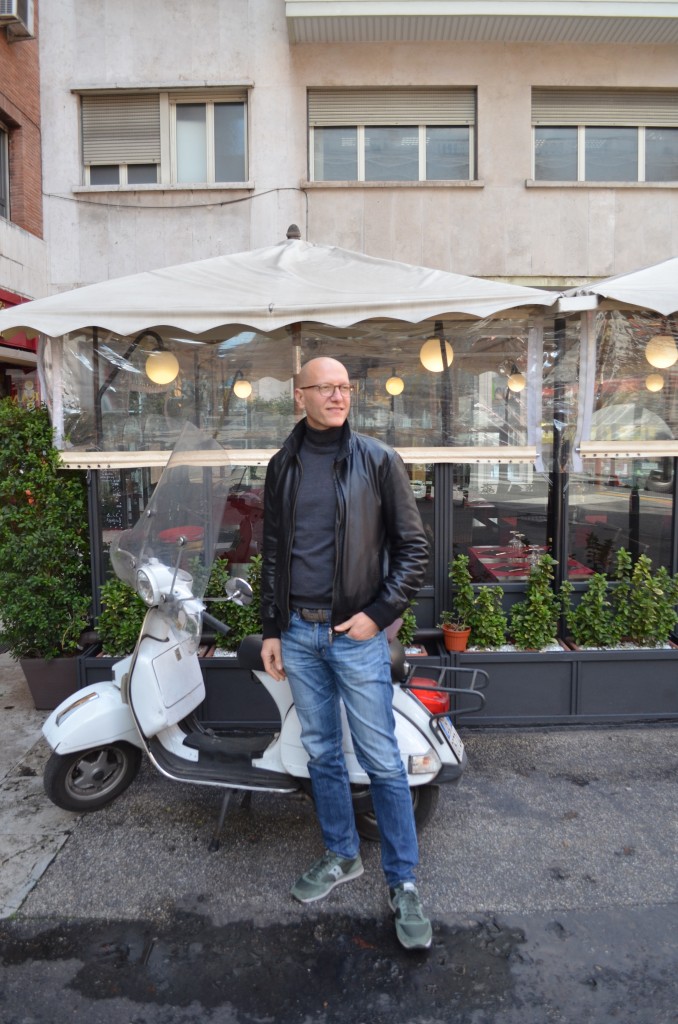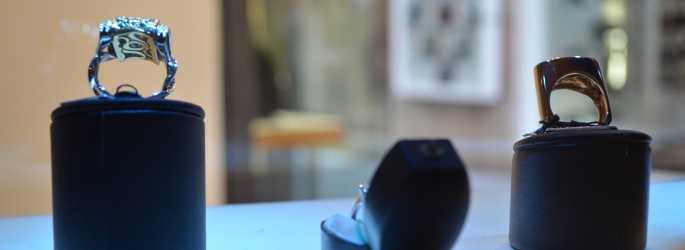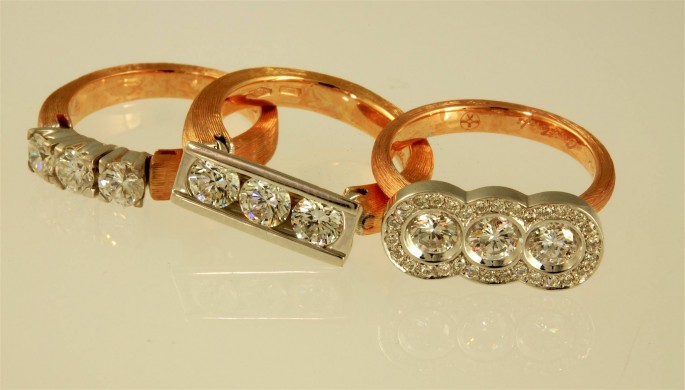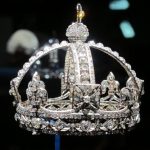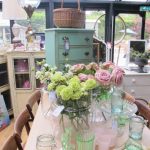Diamond *Experts* Are A Girl’s Best Friend: A 7 Step Guide To Diamond Buying
Written by Jaillan Yehia
It’s like a dream come true for a girl to visit not just one but 12 Italian jewellery stores and learn about gem stones, design and precious metals from classically trained Roman jewellers.
It’s even more perfect when these happen to be Rome’s best hand-crafted jewellery boutiques, all on the official list of the 28 best shops in Rome.
So when this recently engaged girl went shopping for a ring in Rome she asked a lot of questions about diamonds: such as what to look out for and what to avoid.
If you’re thinking of buying a diamond or gem stone ring, necklace or any other form of precious jewellery, don’t even think about making a purchase until you’ve read this Italian guide to diamond buying and soaked up the wisdom of one of Rome’s premier jewellers…
On entering the Gentileschi jewellery shop in the Monti neighbourhood of Rome, I’m first alerted to the high value of the contents of the store by the heavy duty security, which sees you file in one by one through a secure vestibule.
Once inside my eye is immediately drawn to the dazzling diamond engagement rings – I’ve been shopping for one lately and I find my pulse quickening and my heart racing at the unbelievable sparkle and obvious superiority of the jewels here, all laid out carefully on a black velvet backdrop.
But I am momentarily distracted by the most beautiful necklace I have ever seen – a whopping 30 carat aquamarine stone, set with a 2 carat pink sapphire and a 2 carat yellow beryl (that’s the yellow version of an emerald) all adorned with dazzling blue, yellow and white diamonds.
The necklace is so gorgeous that I momentarily convince myself that an engagement necklace could be a new trend that I might start, but eventually I have to relent in the face of tradition and reluctantly hand my necklace back to Fabrizio Gentileschi.
But not before I make an appointment to pick his brains and find out why Italian jewellery is just so mesmerising, and how shoppers can approach making an important jewellery purchase while in Rome.
Gemology is in Fabrizio’s blood – the store was founded by his father Mario in 1965 and his sister Sabrina became the lead designer, while he studied his craft in Vicenza – one of Italy’s master cities for jewellery.
I ask Fabrizio to share his personal guide to diamond buying – asking what buyers should bear in mind when making a purchase as important as a diamond engagement ring – or indeed any precious stone jewellery – and why Italy feels like the perfect place to find something stylish and unique.
What Does This Post Cover?
A ROMAN ARTISAN’S GUIDE TO DIAMOND BUYING
1. BUDGET
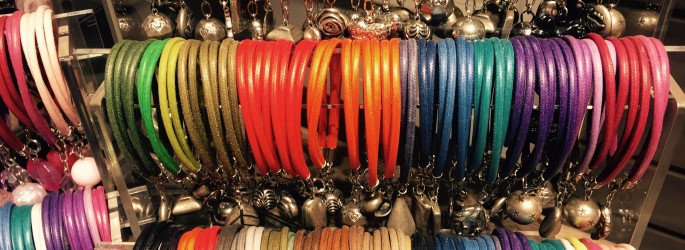
There are some bargains to be found in the jewellery shops of Rome – like these bracelets at CillaBijoux
‘The first thing to consider when buying fine jewellery is budget – that’s the most important thing,’ Fabrizio admits, which is a reassuringly down to earth start.
Then choose the stone, he advises, and next discuss clarity and cut. ‘Don’t just think about the size of the stone, you have to think practically too,’ – for example about the safety of having a large obvious stone and also whether it fits your lifestyle.
2. WHEN IN ROME…
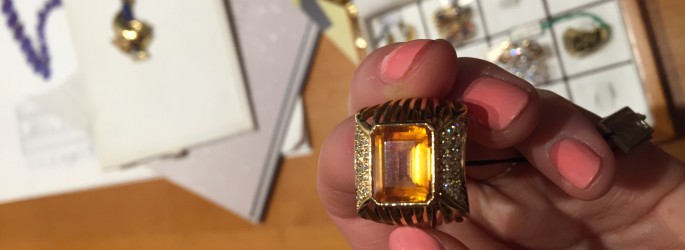
Rings at Riccardo Alfonsi in Rome’s Centro Storico
‘Remember, you don’t buy just a diamond; it’s set in something. Italian designers and goldsmiths are known worldwide and everyone knows that Italian manufacture and design is top quality.’
Fabrizio advises those looking for a diamond while on holiday in Rome (or indeed anywhere else on your travels) to walk around and do some window shopping first, to familiarise themselves with what’s on offer.
‘Have a look at the fantastic gems and jewels in Rome – there is a big difference in the styles here, for example US and Canadian styles are very different.’
‘If we talk about Roman Artisans, we have our style, we trust in our style and we believe in our style. You walk around Rome and on every corner you see a church, you see heritage. It’s a cultural thing – as Italians this heritage is in our DNA.
3. STYLE
Fabrizio also advises engaged ladies like myself to really think about what style we want and compare styles in different parts of the world: ‘Style is so important, if you’re buying abroad you’ll notice different trends in every city,’ he admits.
‘In North America, they tend to want everything bigger, and often they only put big pieces in the window.’
So the first thing he advises when sharing his guide to diamond buying you to think about is what defines your style – are you looking for something blingy? Or modern, classic, or something quirky? Do you definitely want white – or are you interested in coloured gemstones as well?
And don’t be shy about buying your stone from one place and then taking it somewhere else if you like the designs there.
‘Show them the Tiffany website if you want or bring in a picture – a jeweller can work with it.’
4. BUYING ONLINE VS IN A STORE
Most production of online diamond jewellery and engagement rings ‘is done in the East and the styles are mainly copied,’ explains Fabrizio.
Increasingly he is seeing a lot of similar pieces in the windows of shops in the Far East, most using CAD for design. ‘You can use technology but there is a value you cannot measure if the piece is made by hand.’
‘You can check the value of a diamond on the internet using one of the online tools and there are lots of places online that sell stones too.
But the experience of buying an engagement ring or piece of precious jewellery is personal and emotional, cautions Fabrizio: ‘the laptop doesn’t transmit your emotions, the image you see there (on the website) isn’t the actual stone you get. Jewels are an emotional thing. Investment purchasing is different of course,’ but for a sentimental purchase he explains that there’s really no substitute for buying in person.
Also while it may seem cheaper, if you buy online there can be huge mark up, he warns: ‘They tend to save money on the cost of production and increase the mark up.’
5. SHOULD YOU CONSIDER GEMS OTHER THAN DIAMONDS?
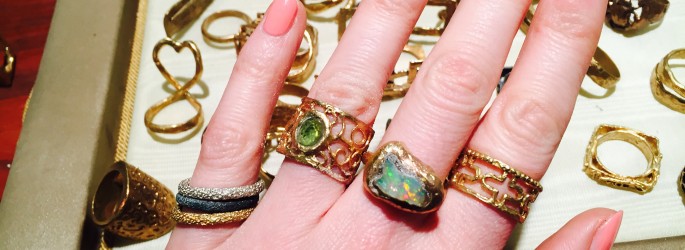
Rings at Patrizia Corvaglia. I’ll take one of every kind please.
There are other stones that are hard, explains Fabrizio – but yes some stones are far softer by comparison such as emeralds.
‘The reason diamonds are so sought after is because they are rare, there are very few in the world, but ultimately if you were to take a hammer to the diamond it will break – its not that hard. So ask yourself “what do I like?” and if it’s something other than diamonds, go for it,’ he encourages – admitting he himself has a thing for rubies.
6. COLOUR VS CUT VS CLARITY
This is the subject of so much debate when shopping for a diamond and every guide to diamond buying seems to have a different take on this subject so it’s a highly personal choice, but Fabrizio says as a jeweller he prefers to select a better colour and a good cut for his clients and not worry too much about inclusions:
‘I don’t care about inclusions as they are a commercial issue. Look at the stone through a 10x magnifying glass and you can’t see anything – its only if you go to 15x magnification – that would be when you see the inclusions.
More than that he sees the inclusions as unique and characteristic of diamonds: ‘Inclusions are the ID of the stone, its not a pity to have inclusions in a diamond, of course if you have black spots it might hide the reflection, but if we choose the right inclusions it’s fine – there are clever inclusions.’
I’m intrigued by the sound of this but he goes on to say that ‘sometimes it’s better to have something that’s not perfect. Stones are not perfect, diamonds are not perfect. People are not perfect. There is no perfection.’ Wise words.
In fact he argues that when it comes to diamonds, the cut is the most important factor: ‘If you make a wrong decision with the cut the diamond won’t shine, so when you talk about perfection the only thing is the cut. If you want to spend extra money spend it on the cut.’
7. CLEVER INCLUSIONS
Something very important has become clear during from Fabrizio Gentileschi’s guide to diamond buying – that trust is the number one thing you need when buying any diamond from a jeweller not least because they can choose a specific stone for you and spot a good cut and pick ‘clever inclusions’ that won’t show up in the setting – and choosing the exact stone is an art form you want to entrust to the right person.
‘Most of my studies are in the diamond business so I like diamonds and I enjoy choosing them,’ he explains.
In fact the diamond selection process is quite intense; he takes me through the stringent diamond buying process – it is a closed shop, and highly regulated: De Beers export diamonds and only 60 buyers from around the world can buy directly from them in Antwerp. It is only those 60 people who can sell on the diamonds to the next level in the chain. All the diamonds (above .25 carats) are certificated and can be traced.
‘After 2 days in Antwerp (buying diamonds) my eyes are completely destroyed!’ he jokes.
So it seems that the best advice from Rome’s expert gemologist is to find a jeweller with whom you can have a frank discussion and consultation, who will take the time to understand your preferences and budget and get you the best stone in the most stylish setting for your money.
‘Or just come to Italy?’ I venture.
He laughs: ‘Yes, come to us! Honesty pays more than any other quality and word of mouth is one of the most beautiful things that happen in our shop: It’s like oil – it expands.
More Info
If you have enjoyed Fabrizio’s personal guide to diamond buying and fancy buying some jewellery on your next trip to Italy, you may want to visit him at his store in the centre of Rome.
You can find more info online at gentileschi.net
Tags: Italy, Roman Artisans, Rome, shopping
Trackback from your site.

